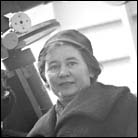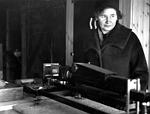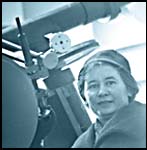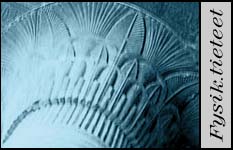 |



|

HILKKA RANTASEPPÄ-HELENIUS
astronomer
1925-75
|
 |
 |

Few astronomers have an observatory in their own farmyard.
Lic. Phil. Hilkka Rantaseppä, a farmer's daughter, was one of
those few lucky ones. She started her studies in mathematics,
thinking she would become a teacher, but was inspired by
Yrjö Väisälä to become an astronomer instead. A diligent
observer of minor planets, she started as an assistant
at the Tuorla observatory in 1956-62. Later, she became observer
(1962-75) after the position held by Liisi Oterma became vacant.

Hilkka Rantaseppä-Helenius felt that she was at home in astronomy.
"I have a very good conscience for not depriving any man of
his bread. Particularly because not many men would have enough
patience for the work that I'm doing. [...] Astronomy is neither hasty
nor hurried. It does not make an astronomer to run hither and
thither. The work is done in the silence of an observatory and
on the computing desks." She took it for granted that exact sciences
are suitable for girls. "It is not at all true that girls do not
understand mathematics. Girls must quite simply gain more
self-confidence, and the understanding will follow."

Rantaseppä-Helenius got an observatory in her farmyard
when a zenith tube was built at her farm at Kevola in Paimio in
1963. Another zenith tube had been successfully employed at the
Tuorla observatory, where it had been used for monitoring
the movement of the Earth's rotation axis.
It was hoped that an additional zenith tube would increase
the precision of these observations. Once upon a time, there
were zenith tubes around the world. Today, satellites and
satellite observations have replaced the network of zenith tubes.

These tubes were erected vertically straight towards the zenith, and
the observer would have to wait for the stars to appear in the field
of vision of the zenith tube. The latitude of the zenith varies
somewhat when the Earth rotates - the axis "wobbles" - which affects
the observed star positions. The zenith tube at Kevola was mostly
intended for monitoring stars near sunrise and sunset. The observer
herself estimated that she had made some 3000 night time observations
during the first year. Rantaseppä-Helenius was planning to
publish her accumulated observations in her forthcoming
dissertation.

In 1969, an old refractor from the former Iso-Heikkilä observatory
that had been unused for a while was also transferred to Kevola.
It was later used by students for their practical exercises with
a telescope. Today, telescope observations are, of course, made
abroad, not in Finland.

Hilkka Rantaseppä's research career was tragically disrupted
in 1975 when she died in an accident, and thus she never saw
the revolution in the observing methods of astronomy.

The astronomer, who shared the responsibility for the Alastupa
farm at Kevola with her brother, was a regular columnist for
the local newspaper Uusi Aura. She wrote about roofing parties
and farming, about forestry and timber marking contests.
Preservation of local arts and crafts was dear to a farmer's
daughter's heart: "Astronomy is quite compatible with the
fact that one has to rediscover time and again how very sensible
the observations and practices of people of the old stock have
been. Just think about buiding houses. Now we have again come
round to building low and attractive houses that fit well into the
landscape, just like our forebears used to. - In astronomy,
we build very much on old observations and results."

Eva Isaksson


 1 1
 2 2

1 Hilkka Rantaseppä-Helenius and interference comparator (December 1963)

2 Hilkka Rantaseppä-Helenius and the 40 cm anastigmate. (December 1963)

Photos: Raimo Seppälä, Aamulehti

|
 |
|











